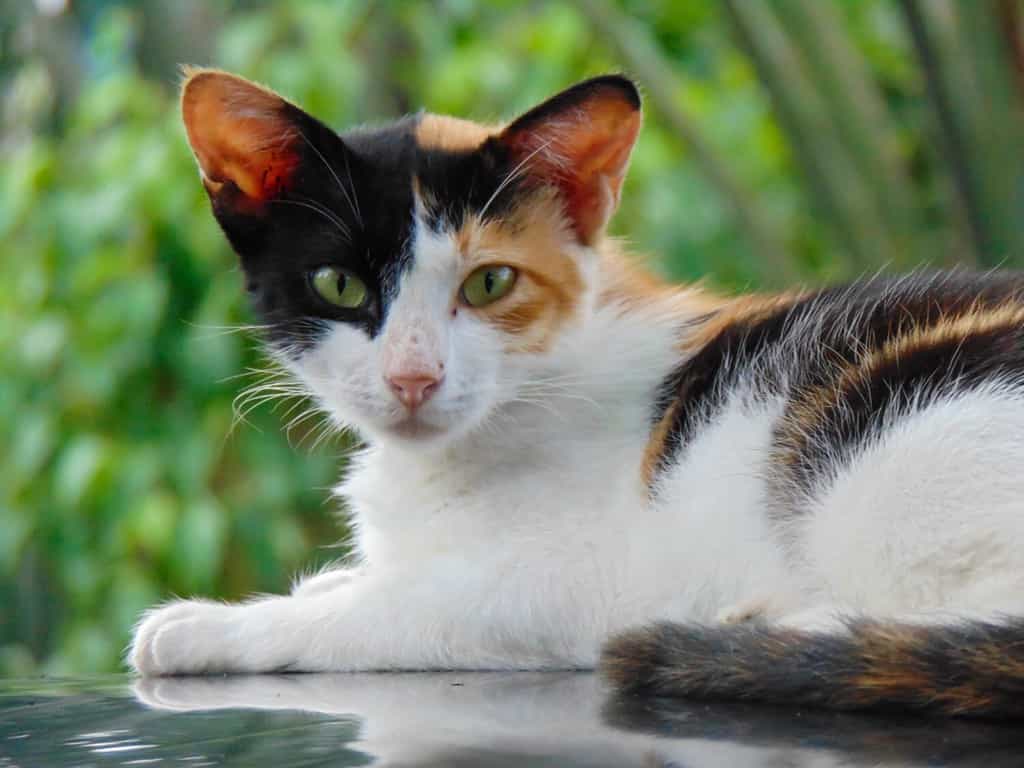Calico cats are a familiar housecat coloration, with many people recognizing their white fur with splotches of orange and black. If you have met a calico cat before, chances are that it was a female. But why?
In the article below, you’ll learn exactly how calico cats get their colors and why meeting a male calico cat is so rare. Ready to learn more? Let’s dive in!
What Is a Calico Cat?
First, it’s important to note that a calico cat is not a breed of cat. Instead, “calico” is more of an adjective, describing a type of coat, much like short grey hair or long orange hair. Calico cats can be of almost any breed, so long as they sport a tri-color coat.
Most often, calico cats have a primarily white coat. Then, along their backs, tails, and faces, they often sport different black and orange splotches. This can also occur elsewhere in the body, but these areas are most common.
There is also a variety known as the muted calico. These cats have the typical calico coat colors and additional colors like grey or cream.

Calico cats have mostly white coats with black and orange splotches.
©Mawaddah F/Shutterstock.com
Are All Calico Cats Female?
You may have heard that all calico cats are female. However, this isn’t necessarily true. Instead, the majority of calico cats, as well as those with tortie coats, are female. The occasional, rare male appears in a litter, though.
According to Cornell University’s College of Veterinary Medicine, only around 1 in 3000 calico cats are born male.
Why Are Male Calico Cats Rare?
In order to understand why male calico cats are rare, you’ll need to dive into some basic genetics.
Two chromosomes determine whether a cat is born a male or female: the X and Y chromosome. The mother will always give an X chromosome, while the father can give an X or Y chromosome. Typically, each parent only gives one chromosome, making for a combination of XX or XY. The pair XX leads to a female kitten, while XY leads to a male kitten.
Coat color is what is known as a sex-linked trait. This means the X chromosome determines the coat color. As a result, males and females can have an X chromosome that causes them to be black or an X chromosome that causes them to be orange, but the typical male cannot be both as they only have one X chromosome compared to the female’s two.
With that being said, male calico cats can only appear in the instance of a genetic abnormality, one that leads to the presence of three chromosomes: two X chromosomes and one Y chromosome.
This is known as Klinefelter syndrome, and it can occur in humans as well as in cats. During the division process in which the kitten should receive either the father’s X or Y chromosome, a complication results in the kitten receiving the entire set. Since they also receive the chromosome from the mother, they end up with a set of XXY chromosomes.
Although this can result in a male calico cat, it can also lead to other complications. This includes the male cat being sterile and having a variety of health issues. However, despite these possible complications, male cats can also live long, healthy lives with their loved ones!

Male cats require a genetic abnormality to be calico.
©Nils Jacobi/Shutterstock.com
The photo featured at the top of this post is © Linn Currie/Shutterstock.com
Thank you for reading! Have some feedback for us? Contact the AZ Animals editorial team.






